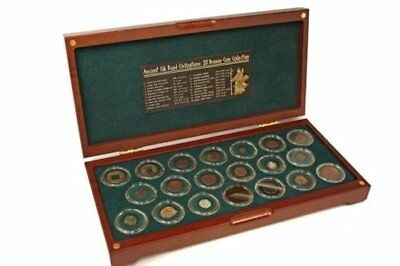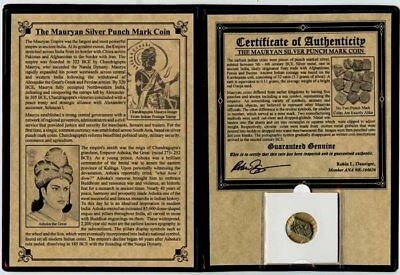-40%
Ancient Silk Road: 20 Bronze Coin Collection
$ 186.9
- Description
- Size Guide
Description
Ancient Silk Road: 20 Bronze Coin CollectionEach coin is protected in an archival capsule and beautifully displayed in a deluxe custom-made cherry hardwood case. The case features a rich, forest green velour-like interior and an engraved plaque inscribed with a list of the coins. The deluxe case and a certificate of authenticity come packaged in an attractive black embossed gift box.
ANCIENT SILK ROAD
20 Bronze Coins Collection
Named in the middle of the 19th century by the German scholar, Baron Ferdinand von Richthofen, the Ancient Silk Road stretched thousands of miles through deserts and mountains from China to Europe. Zhang Qian first traveled it when he was sent on a diplomatic mission to the Western Regions in the Han dynasty (206 BC-AD 220). At that point in history the Han dynasty and the empire of Parthia in Persia were in their Golden Ages, which supported the smooth development of this route. The Silk Road was the information super highway of its time, serving as the conduit not only for trade, but also for the transmission of knowledge and ideas between East and West. It prompted an explosion of long and short-lived civilizations and a large array of different ancient currencies over the centuries.
When the Silk Road was first established, silk was not the chief commodity. The Han dynasty made very little profit from it until the Romans discovered silk. The Romans loved silk so much that they even exchanged silk for its weight in gold. During the Tang dynasty, thirty percent of the trade on the Silk Road was comprised of silk.
In the early middle ages, with the spreading of various religions in the world, more and more missionaries reached to the East by this road. With the Silk Road acting as a conduit, the exchange of ideas grew to a larger scale than ever before. The discovery of a sea route from Europe to Asia in the late 15th century dealt a damaging blow to the Silk Road trade. With less cost, harassment and danger, many goods and materials were now conveyed through the sea route. Also, the Persians had mastered the art of sericulture and the import of the silk from the East was reduced.
Thereafter, the prosperous Silk Road declined. The bustling streets, wealthy cities and solid ramparts now are submerged in the vast desert, and today, people can only trace its splendid history in the endless ruined and dilapidated remains, and the few ancient coins that were hidden away. Many of these civilizations are known only by the rare coins that remain. The unique collection of genuine coins of the Silk Road Civilizations presented here are the result of many years of laborious and fortuitous accumulation of small groups of coins from dozens of sources from around the world. Each coin is protected in an archival capsule and beautifully displayed in a deluxe custom-made cherry hardwood case. The case features a rich, forest green velour-like interior and an engraved plaque inscribed with a list of the coins. The deluxe case and a certificate of authenticity come packaged in an attractive black embossed gift box.
TYPICAL ASSEMBLAGE OF COINS – COINS MAY VARY
1
China Qin Ban Liang -2nd/4th CBC
11
Umayyid-Abassid Fals -7th CAD
2
Indo-Greek Kings-2nd/1st CBC
12
Shahi Jital- 9th/11th CAD
3
Judaea Lepton - 1st CBC
13
India Chola Massa-10th/11th CAD
4
Sunga 1/2 Karshapana -1st CBC/1st CAD
14
Kashmir Stater -10th/12th CAD
5
China Hsin Huo Quan-1st CAD
15
Ceylon Kandy Massa-11th/13th CAD
6
Kushan Drachm-1st/2nd CAD
16
Western Rajput Jital-12th/13th CAD
7
Narwar Kakini Fraction-3rd/4th CAD
17
Mamluk Fals-13th CAD
8
Kushanshah Drachm-3rd/4th CAD
18
Kwarezmshah Jital-13th CAD
9
Roman Empire Nummus-4th CAD
19
Kampuchea 1/2 Fuang-19th CAD
10
Byzantine 40 Nummi-7th CAD
20
Nepal Shah Paisa-19th CAD









